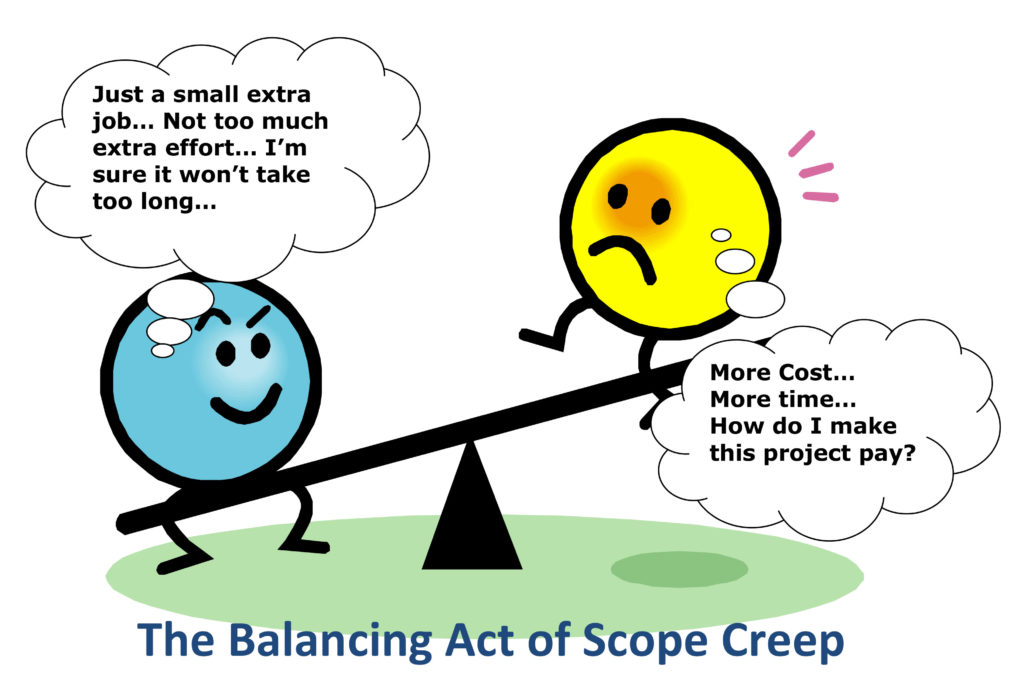- BY Kevin Barry BSc(Hons) MRICS
- POSTED IN Latest News
- WITH 0 COMMENTS
- PERMALINK
- STANDARD POST TYPE
The danger of scope creep
Scope creep is one of the most dangerous threats to the satisfactory completion of any project. It is a phenomenon which affects profitability and timeliness of project management, though the client will usually remain oblivious to this fact. When the project scope is allowed to increase ad-hoc, recovery can be difficult and lead to cost overruns and undue stress among contractors and sub-contractors. A well-managed project will have policies in place to deal with scope creep before it rears its ugly head.
What is Scope Creep?
Project scope is limited by the parameters under which the project is constructed. When project scope increases because of client requests, extra work has to be undertaken. This extra work is usually small bite-sized chunks, one or two new features, or different sizing requirements, and so on. Through these small extra works, the project slowly grows far beyond its original bounds.
Contrary to popular belief, the majority of projects which suffer scope creep are not afflicted by unscrupulous clients trying to get something for nothing. Rather, scope creep is often a symptom of poor initial analysis of needs or simply misunderstanding on the part of the client.
Five steps to manage project scope creep
Assuming that the project has been effectively scoped before the project has started, and that the desired outcome is clear to all, avoidance of scope creep is managed by utilising an effective change control process. Such a process will put in place a number of steps which need to be taken upon any change request by the client:
- Any change must be requested in writing using a change request form
- The requested change must be fully analysed, with attention paid to potential and actual impacts on the wider project
- At this stage there are three possible outcomes: the change request can be accepted, rejected, or amended
- Once the change is signed off, it needs to be adequately funded (with contingency, too) and scheduled into the project
- The change request and outcome will need to be added to the project documentation
Controlling project scope and scope creep
As well as the above scope management method, the project manager should put in place processes for the sufficient monitoring of the project as it progresses through its lifetime. This will include analysing and measuring actual delivery against the planned project scope.
A well-managed project should never suffer from scope creep, as there should never be any unauthorised changes to the agreed project scope. Implementing scope management processes which include a change control process will ensure all changes are properly priced as to cost and time, with knock-on impacts identified and analysed, before being approved and recorded in the project documentation and changes disseminated to all project stakeholders. This will help ensure the project is delivered on time and within budget, with no nasty surprises to any project stakeholder.

